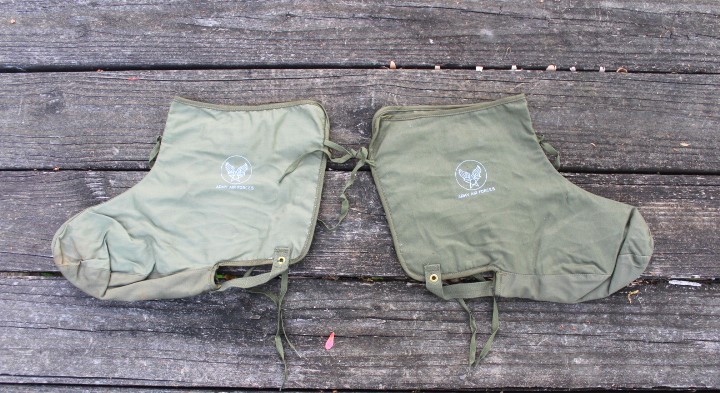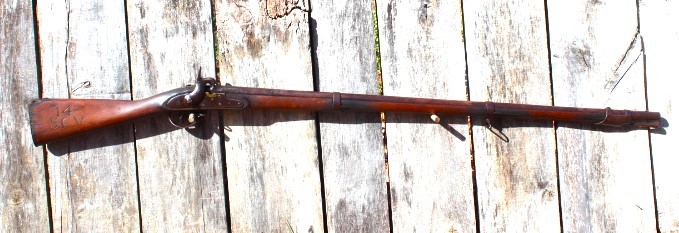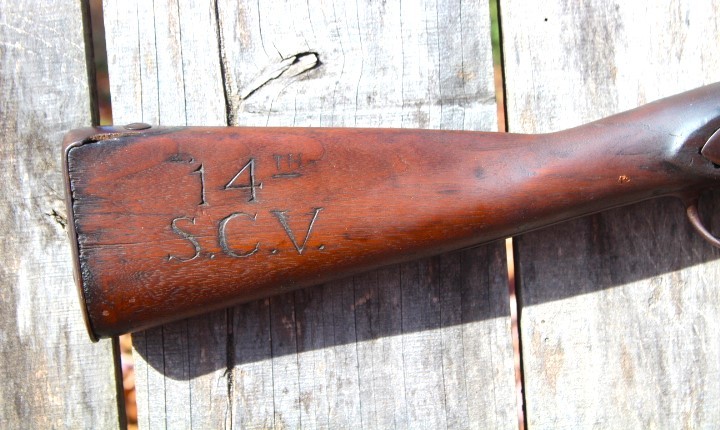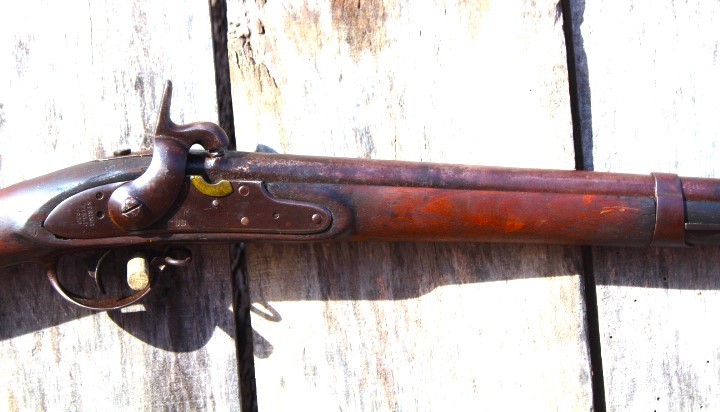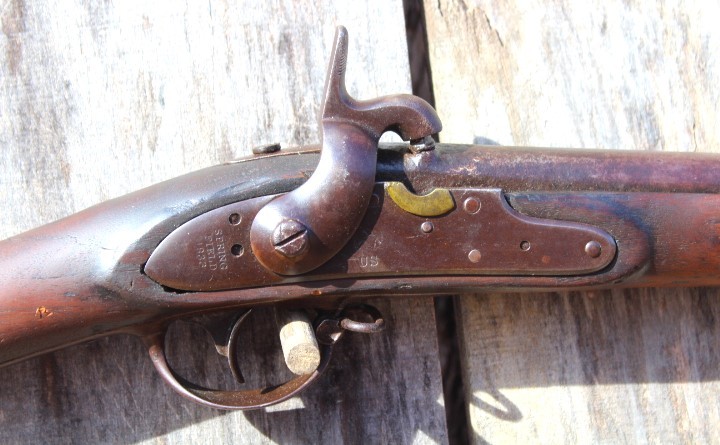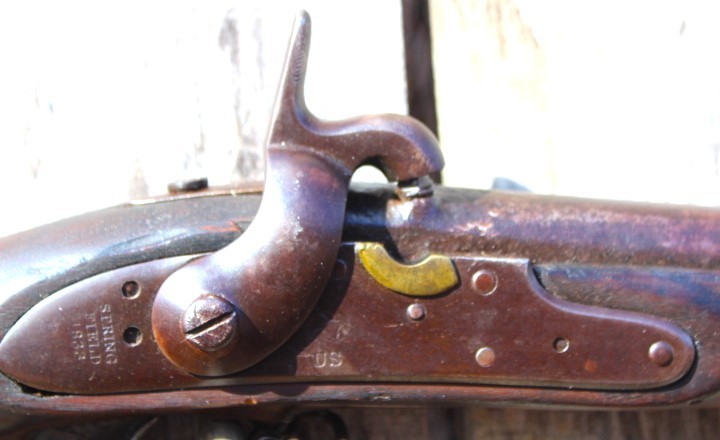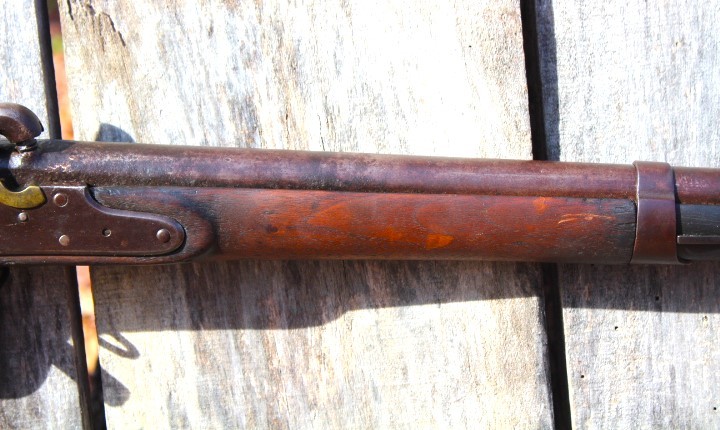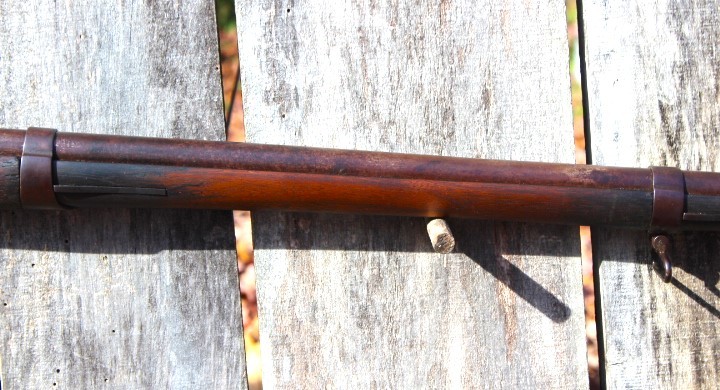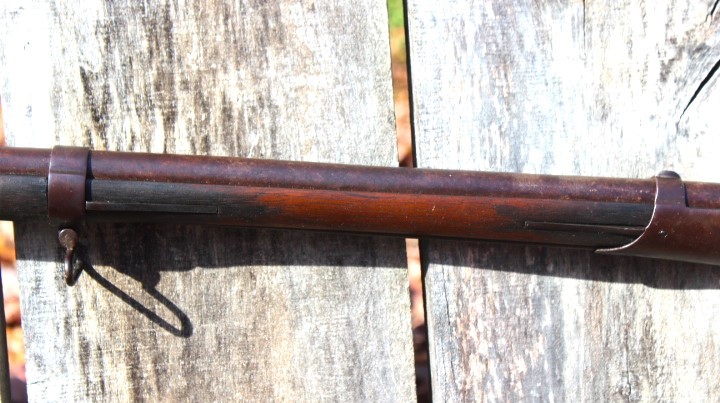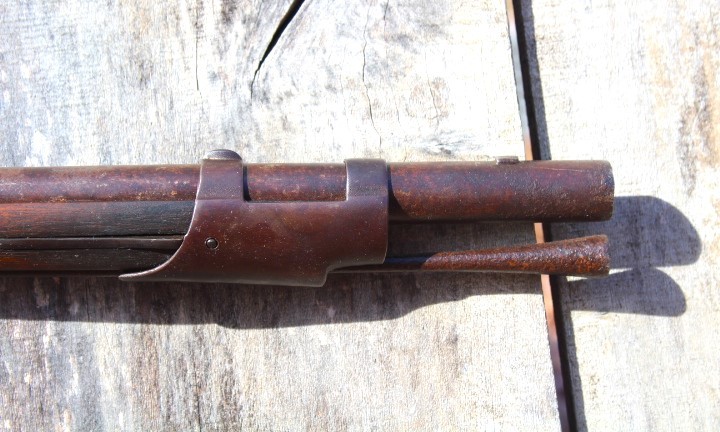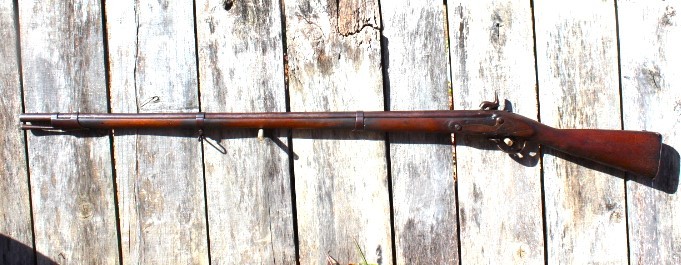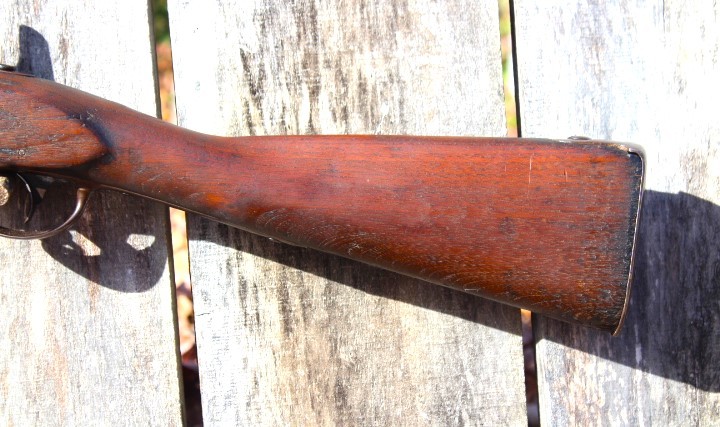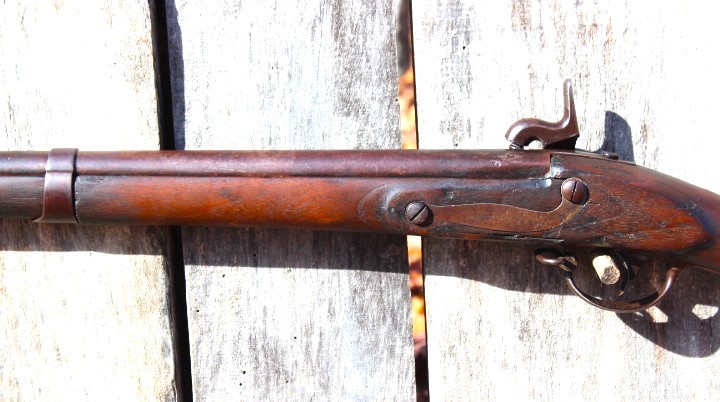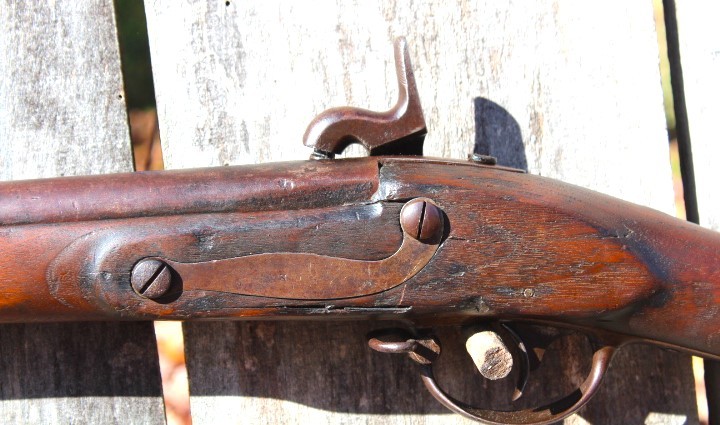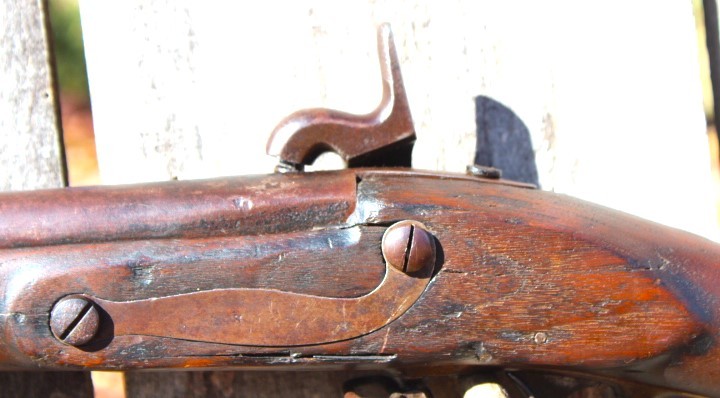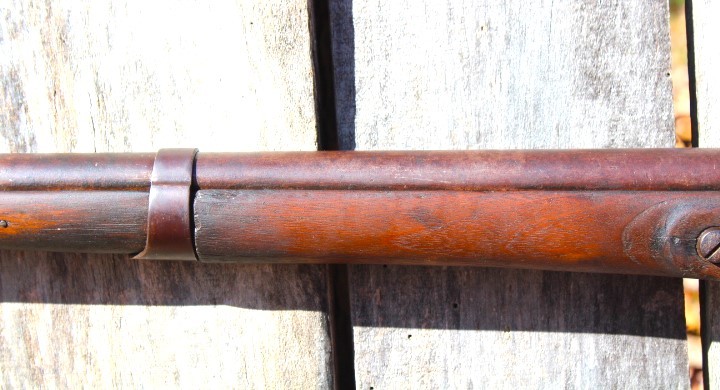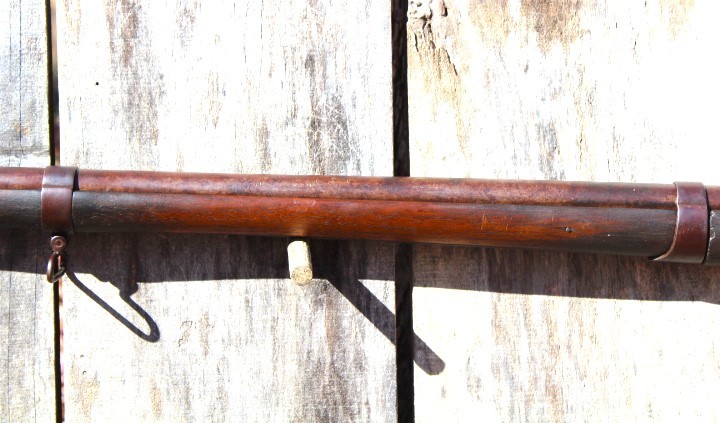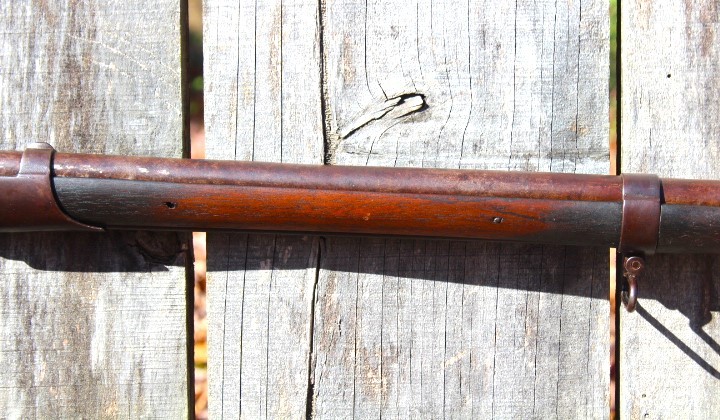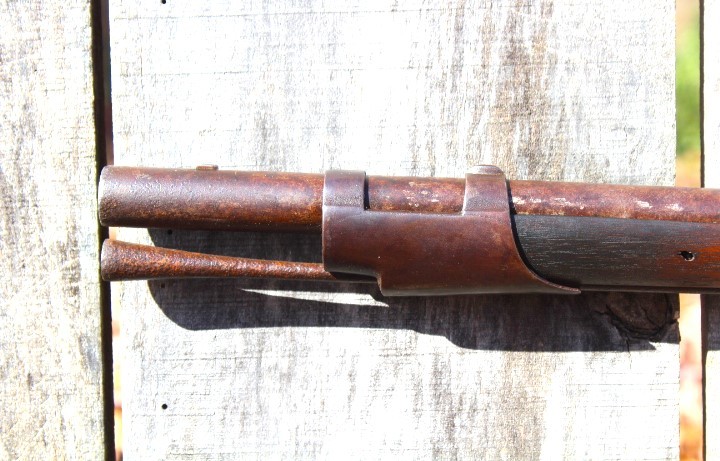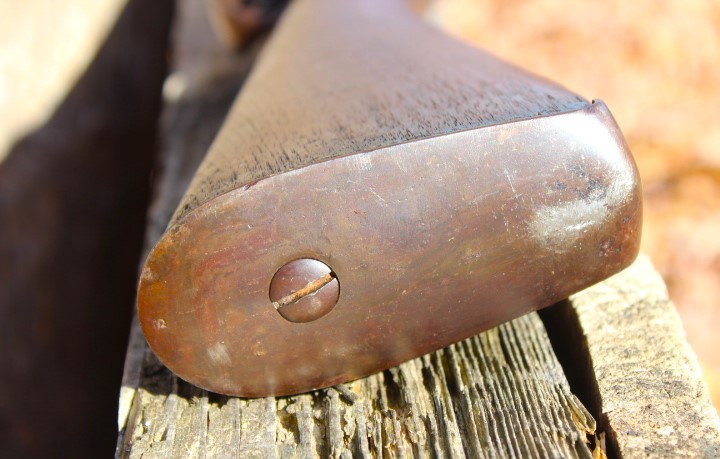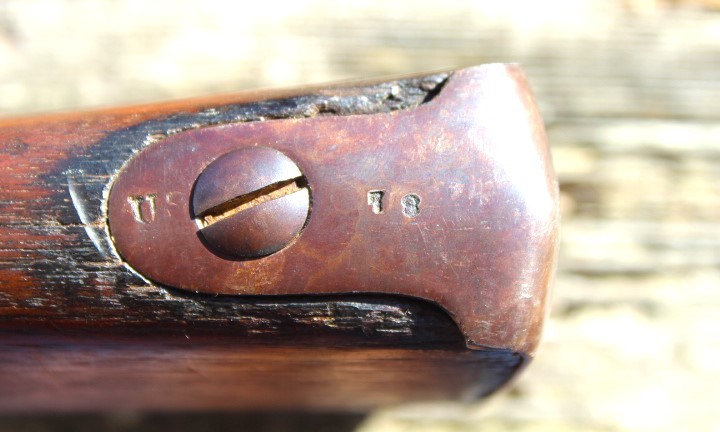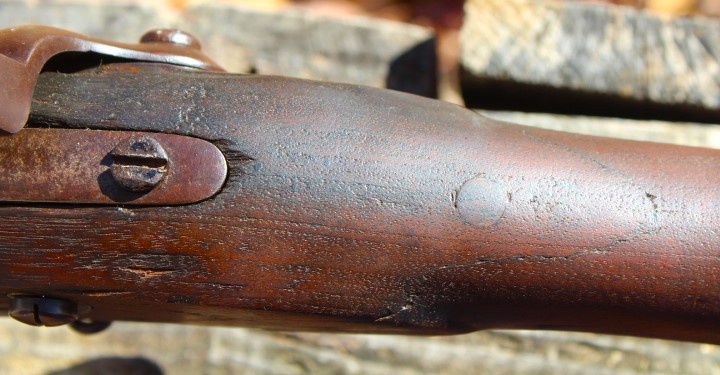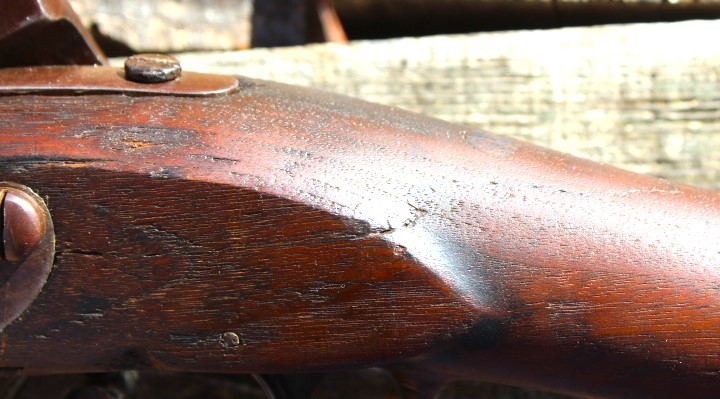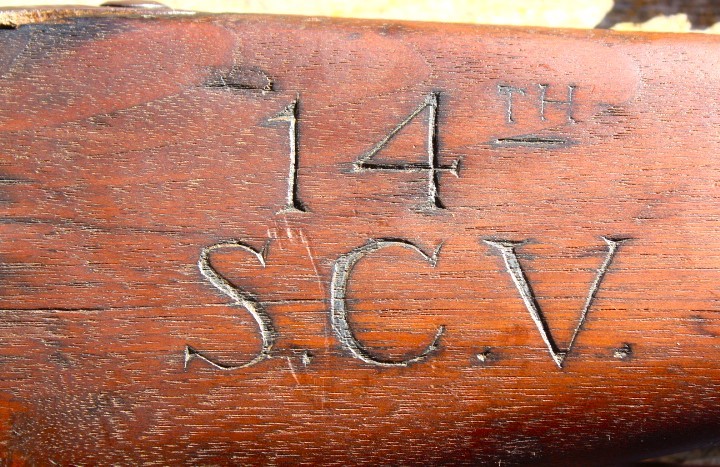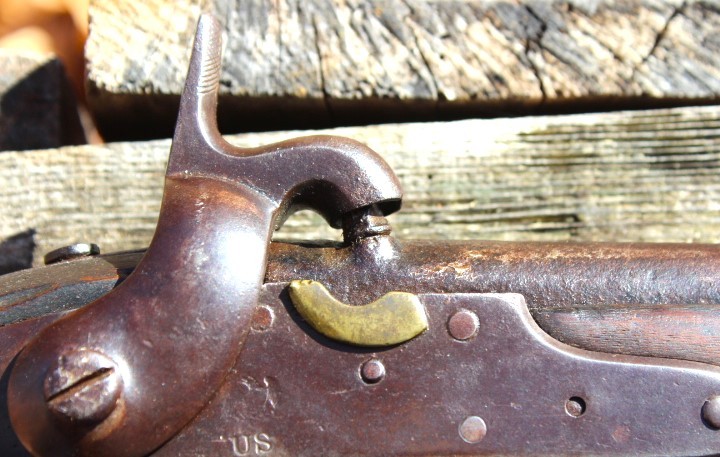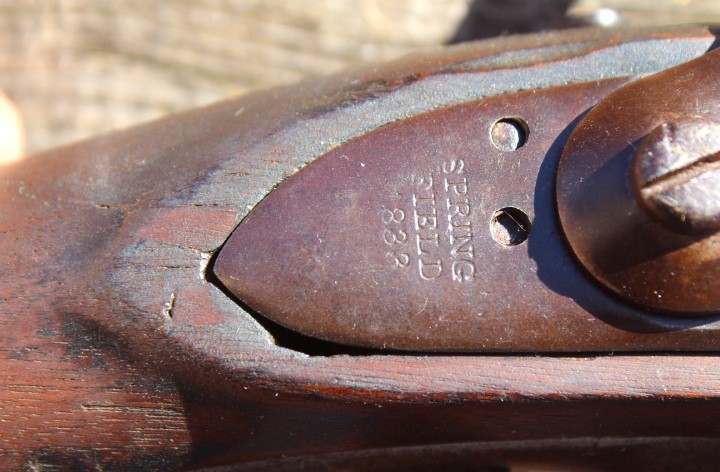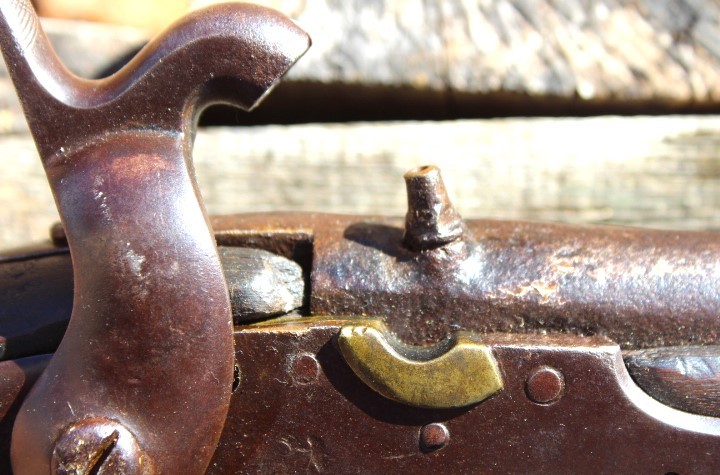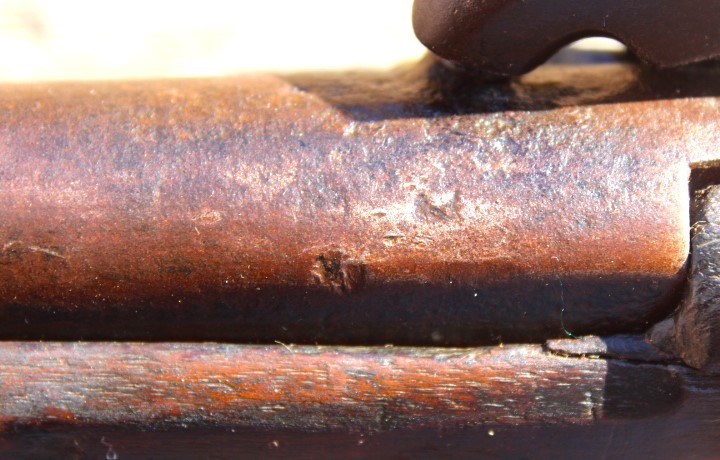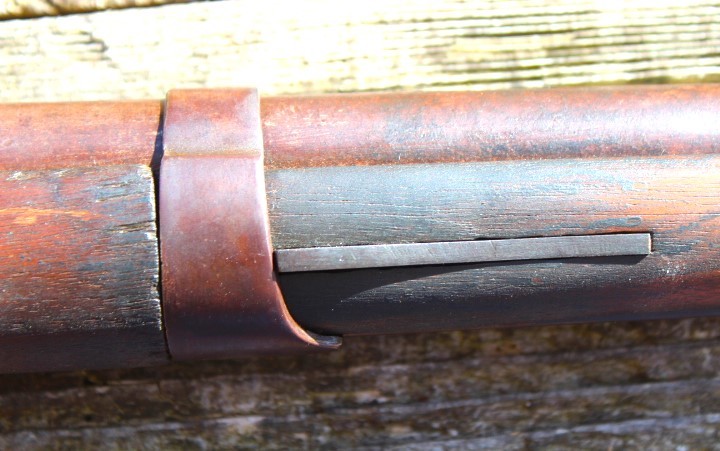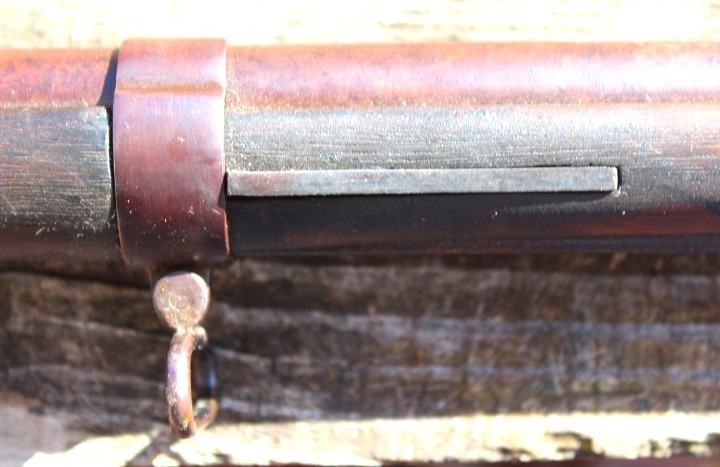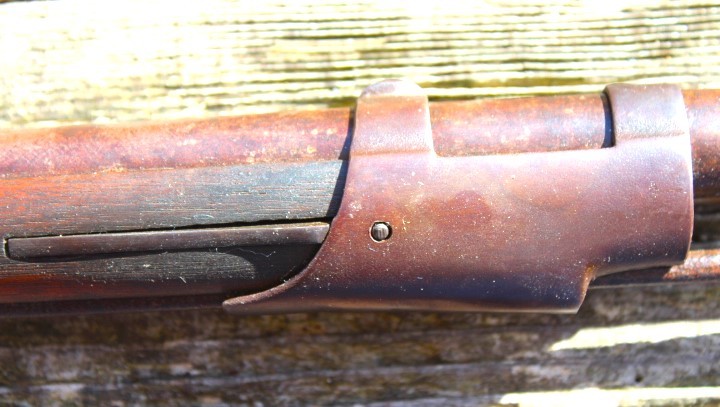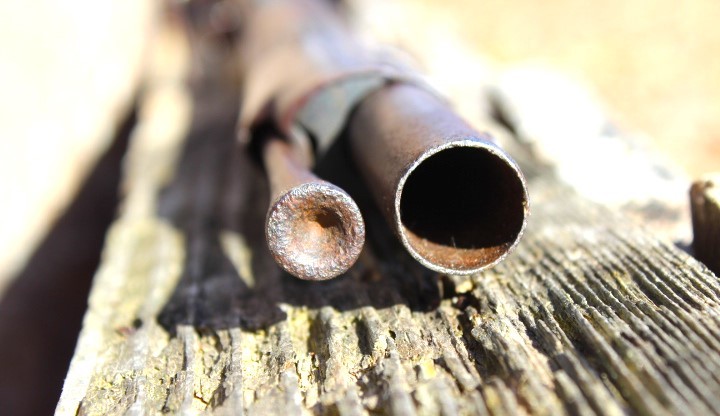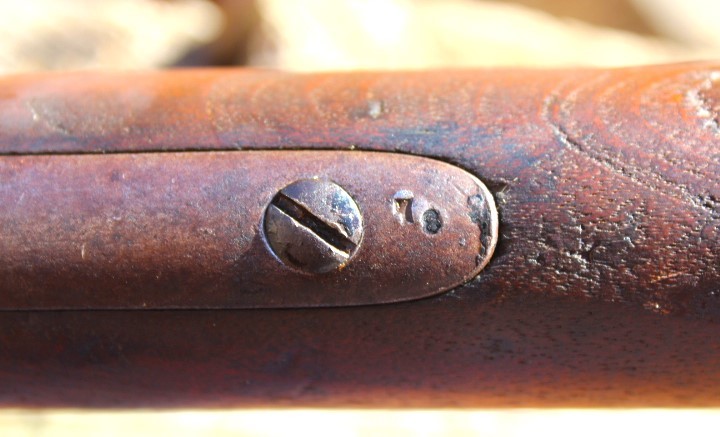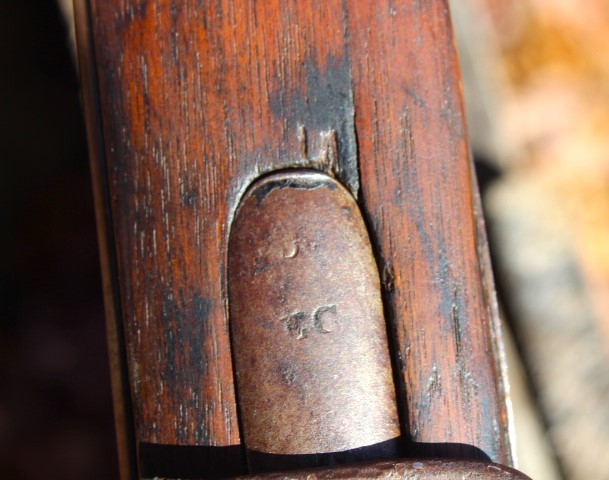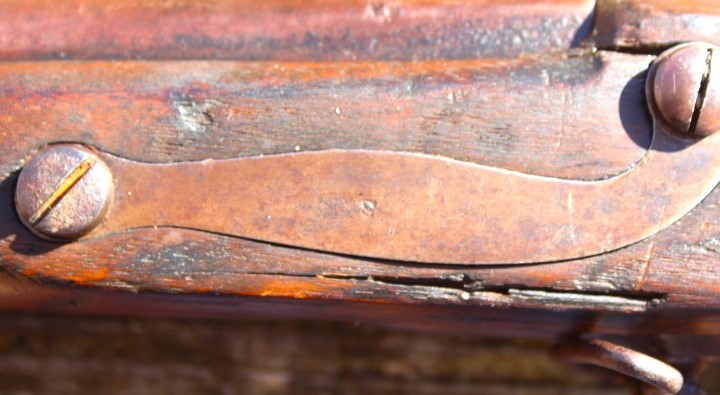Springfield Model 1816 Percussion Conversion Attributed to the 14th South Carolina Volunteers
Item #: WR1093
This is a Model 1816 Type III Springfield musket from the Civil War era. The musket was originally a smooth bore .69 caliber flintlock weapon that was converted to percussion in the 1850's at the arsenal. The Belgian "Cone" method was used to altered the ignition system to percussion on this musket. All the external lock parts were removed, screw holes plugged, the pan ground flush with the lock and the small cavity filled with brass. The vent hole of the barrel was plugged with a nipple screwed into a threaded insert set slightly off center, towards the lock side. This type of conversion was only performed at the Harpers Ferry and Springfield arsenals, and is sometimes referred to as an "arsenal conversion". This converted musket measures 57 3/4" in length with a 42" barrel. The barrel has a bore that is turning dark and shows light pitting along the length of the barrel. The exterior of the barrel has very slight pitting and pin pricking at the breech end, mainly around the nipple. The remainder of the barrel has a smooth, pit free surface that exhibits a dark brown/plum patina. The bore gauges out at .72 caliber. The three barrel bands have a patina that matches the barrel. The barrel has the top bayonet lug applied. The proof marks of P within a recessed oval and V are no longer visible, only the eagle head remains. The barrel tang date is no longer visible. The lockplate, hammer, trigger guard and butt plate have the same patina as the rest of the gun. The lockplate is marked SPRING/FIELD/1833 behind the hammer and has an eagle over the letters US forward of the hammer. The action is very crisp and the hammer holds both half and full cock. The hammer strikes the nipple strongly when the trigger is depressed. The trigger guard has rounded finials and is stamped with the letter D and EC on the front finial with the number 78 stamped on the rear finial. The rear sling swivel is still on the trigger guard bow, the front sling swivel on the middle barrel band. The side plate opposite the lockplate has the letter S stamped into it. The butt plate has the US markings on the tang, and the number 47 behind the upper butt plate screw. The butt plate is also stamped with the sub inspector letter of S. The trumpet style ramrod is still present, but the threaded section is missing. The dark walnut stock is in good condition. There are the usual bumps and dings from normal handling, but no major cracks or wood loss. The barrel and ramrod channels still shows very crisp edges. There is one faint oval cartouche visible on the left stock flat. At some time the stock has been repaired in the wrist area. It has been very well executed and is not noticeable at first. The right side of the stock has 14th S.C.V. very neatly carved in it. The 14th South Carolina Infantry Regiment was a very hard fought unit was initially assign to Brigadier General Maxcey Gregg's Brigade, A.P. Hill's Division of the Army of Northern Virginia. They remained under Hill's command when he took command of the newly formed 3rd Corps in 1863. They saw action at Port Royal, the Seven Days Battles, 2nd Manassas, Chantilly, Sharpsburg, Shepherdstown Ford, Frederickstown, Chancellorsville, Gettysburg, Falling Waters, the Bristoe Campaign, the Mine Run Campaign, The Wilderness, Spotsylvania Court House, North Anna, Cold Harbor, the Petersburg Siege, Five Forks and finally Appomattox Court House. Of all these hard fought battles, they are probably most remembered for their part at Spotsylvania. It was at this battle that they fought their way into the Muleshoe Salient of the earthworks. For 18 hours the 1300 South Carolinians repulsed thousands of Union soldiers, with much of the fighting being hand to hand. When the smoke cleared, the 14th South Carolina reported 451 men killed, wounded or missing, all within the confines of that small part of the works that became known as the "Bloody Angle". I believe that this rifle hung in a UCV camp hall of the 14th South Carolina Volunteers after the war. This is a fine example of an early military musket that could have seen service in the Mexican American war and then been converted for use in the American Civil War. It would make a fine addition to any US military long arms collection, especially a South Carolina collection.
Your Price $1,495.00 USD
Sorry we are not accepting on line orders at this time. If you are interested in an item please contact me at 615 717 7792 or email me at mwkiser07@gmail.com.
If you have ordered or are considering ordering an antique weapon or artifact from our website please be advised that these artifacts and antique weapons are sold strictly as collectible antiques.
We strongly recommends that these artifacts be enjoyed and appreciated for their historical significance and not ever fired. By ordering you are acknowledging these facts, warnings and assume full responsibility for your personal actions with regard to them.
We DO NOT sell modern firearms , all our inventory is pre 1898 and are classified by the ATF as antiques and require no government paperwork to own.
